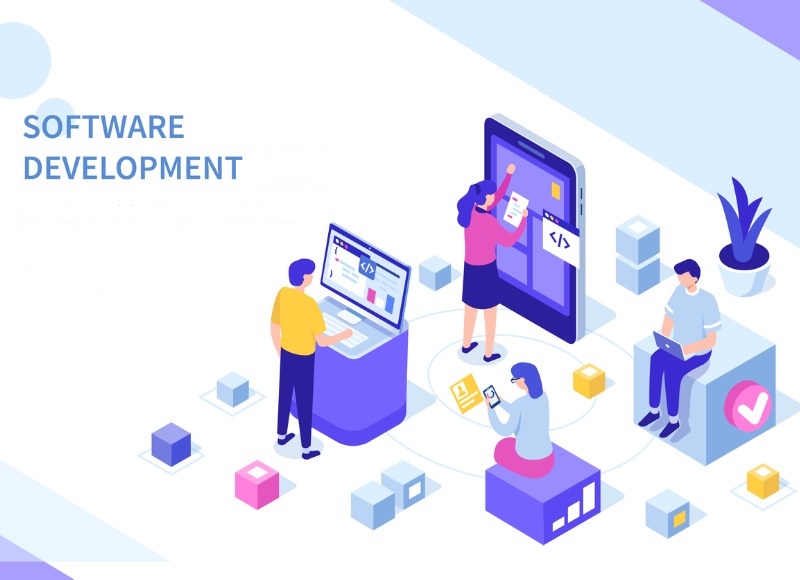- Home
- Blogs
Top 11 Software Development KPIs & Metrics You Should Be Tracking Now
In this article, you'll learn about 11 metrics in software engineering that you can start tracking immediately for optimal results.

You must accurately understand how your team performs on each project in the software development industry. Therefore, it would be best to regularly use software development KPIs and metrics to make decisions based on accurate data, not just instincts. However, not all software KPIs are created equal. In this article, you'll learn about 11 metrics in software engineering that you can start tracking immediately for optimal results.
What are software metrics?
Software metrics are standards of measurement used to track progress and performance in software engineering. It gives developers a thorough rundown of the different steps of the software development process.
Software metrics help your team identify development problems and make adjustments where needed. They are always actionable. For example, you could count the number of bugs in your codebase or track how quickly you can ship new features. These types of data can help guide your decisions about what features to build next and whether or not it's time for some developers to switch over from writing tests to writing code.
Why should you care about KPIs?
KPIs in software development is a big deal because they provide a way to track progress more than gut instincts. Let's consider this software metrics example.
You're building an app for farmers, and your goal is to use data collection and analytics tools to help them identify the best crop locations for their land, which will help increase yields by 20%. If this is your goal, it would be helpful for you to know how much closer to achieving this goal your app has come since work started. Software KPIs give you those answers by showing you what's been accomplished so far and how well your product will perform after release.
Top 11 KPIs for software development teams
As a reliable software development company partner , you want to track KPIs that will help you quickly understand your team's performance and ultimately deliver better client results. Agile metrics are well-known software metrics in software engineering. It combines metrics that help teams measure progress during various software development life cycles. It includes the following KPIs.
1. Lead Time
The lead time metric indicates how long it takes to get the order to production. It can be measured in days, weeks, or months, depending on your team's process. One way to calculate lead time is to subtract the order request date from the delivery date.
2. Cycle Time
Cycle time is the quantity of time it takes to make a product. It differs from lead time because it does not include when the customer places an order. Cycle time is estimated by dividing the total time spent on a task by the number of tasks performed.
3. Team Velocity
Team velocity is the average rate of delivery of a team. It is measured by counting the number of software units completed in a given period. Team Velocity is one of the most important metrics because it indicates how quickly you can get things done.
4. Active Days
Active days are the number of days a developer could contribute to the project. It doesn't count the time it takes to prepare or discuss task priorities. The only indicator here is the time spent writing code for the software. Hence, it allows developers to detect interruptions that affect productivity.
5. Code Churn
Code churn measures how actively developers are working on the codebase. There isn't a standard level of code churn for every developer. It is common to delete and test different codes to discover what works. However, when a team is experiencing sudden spikes in churn levels, it may be time for the team to look inward for answers.
6. Code Coverage
Code coverage is a software testing metric that measures the percentage of your code covered by tests. Essentially, it tells you how much of your application is thoroughly tested. It's an essential indicator of how well your team is testing their software and can be used to identify areas where increased testing efforts would be beneficial.
7. Escaped Defects
Escaped defects show the bugs introduced and discovered after the release. To track your defect escape rate, tag each defect when you create the work item, so you know where to look for it. The goal for this KPI in software is usually zero defects.
8. Mean Time Between Failures (MTBF) and Mean Time To Recover (MTTR)
The MTBF is a KPI in software development that measures how long you can use your product before it needs to be repaired. For example, if you have an MTBF of 10,000 hours and run your application 24 hours a day, then this means that, on average, it will take 100 days before one of your servers breaks down.
On the other hand, MTTR measures how long it takes to repair a defect. By tracking this metric, you can determine whether your team has adopted agile practices and is working efficiently.
9. Code Review
The primary purpose of code review is to find bugs or errors in the code before it gets deployed by customers or users. In addition, code reviews enable developers to share knowledge about the application being developed and uncover any issues with existing code before they go live.
10. Defect Removal Efficiency (DRE)
DRE also allows developers to fix bugs before release. It is calculated as the ratio between the number of defects removed by a test and the total number of defects found. In other words, it tells you how much work was done to fix all the bugs found by your tests. The higher this percentage, the better your tests are at removing bugs.
11. Release Burndown
Release burndown measures how much work is left to do in the release cycle. It's typically displayed as a line chart, with time running on the x-axis and the number of tasks remaining on the y-axis. This chart helps you understand whether your team can complete a particular job within a sprint or iteration.
Summary
If you want to improve your software development metrics, start by measuring these top 11 KPIs. You'll get a glimpse into how your team is performing and what they need to improve—and it won't take long!
Take the time to set up basic reporting and tracking for your team. It will save you time later on when things get busy. Plus, it's easier than ever with tools like Jira Software and Pivotal Tracker. These tools have built-in reports and dashboards. Also, it is better if the tracking metrics are set up by a professional software development solution provider. These features can help streamline the KPIs in the software development process even further.

